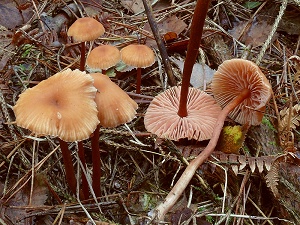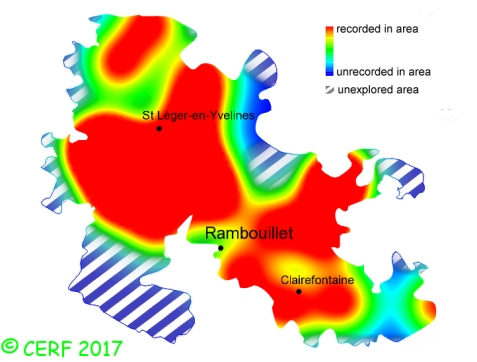| Laccaria laccata (Scop.:Fr.) Cooke |
|
|
|
|
|
|
The cap is red-brown to brick red or flesh pink, convex then flattened to depressed; its margin is striate in damp weather, often wavy. The cap surface is smooth, not viscid nor sticky. The stem is red-brown, almost same colour as cap, often twisted, without ring. The flesh is pinkish, unchanging; its taste is mild, faint or not distinctive; the odour is weak or not distinctive; its texture is fibrous. The gills are pinkish, adnate to decurrent, distant (nb of gills per 90° ~ 9 ). The spore print is white. This species is mycorrhizal or saprophytic. It grows on the ground, in broad-leaved or coniferous woods, open areas, heaths, on a rather variable soil, with poplar, chestnut, oak, fir, beech, willow, alder, birch. The fruiting period takes place from May to December.
Chemical tests : none. Distinctive features : Red brown to pink red, or pale ochre yellow when dry; fleshy pink gills, thick and distant; stem and cap of same colour; tough stem; frequent and variable in appearance; usually favouring wet areas of forests and heaths Laccaria laccata is frequent and very widely present in the forest of Rambouillet, and is very frequent, more generally speaking . | ||
|
page updated on 14/01/18

